
This parent guide supports parents in helping their child at home with the 7th grade Science content.
- Subject:
- Science
- Material Type:
- Reference Material
- Vocabulary
- Author:
- Kelly Rawlston
- Letoria Lewis
- Date Added:
- 10/11/2022

This parent guide supports parents in helping their child at home with the 7th grade Science content.

This resource accompanies our Rethink 7th Grade Science course. It includes ideas for use, ways to support exceptional children, ways to extend learning, digital resources and tools, tips for supporting English Language Learners and students with visual and hearing impairments. There are also ideas for offline learning.

In this lesson, students discover body system interactions and how the organ systems work together to maintain homeostasis.
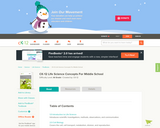
CK-12's Life Science delivers a full course of study in the life sciences for the middle school student, relating an understanding of the history, disciplines, tools, and modern techniques of science to the exploration of cell biology, molecular biology, genetics, evolution, prokaryotes, protists,fungi, plants, animals, invertebrates, vertebrates, human biology, and ecology. This digital textbook was reviewed for its alignment with California content standards.

This resource is a collection of vocabulary words related to cell structures.
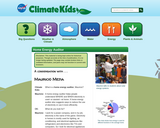
This career-oriented interview features a home energy auditor. He describes his job responsibilities and offers tips for improving home energy efficiency. The Climate Kids website is a NASA education resource featuring articles, videos, images and games focused on the science of climate change.
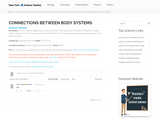
Students complete a diagram that depicts the body systems that work together to get molecules to cells.
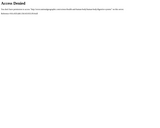
This resource is a detailed article on the digestive system.

This resource is a collection of flash cards related to the innerworkings of the digestive system.

In this lesson, students create a model that is analogous to a cell. They will use a predetermined model to associate cell function to structure and will discuss the limitations of the models used in the investigation. They will communicate their work and then evaluate the work of their peers in a given context.

Students will learn how climate change poses risks to human health. Students will realize we need to safeguard our communities by protecting people’s health and quality of life from climate change impacts. Students will apply what they have learned and discuss in groups how the U.S. could apply their research and support toward third world countries. The standards tagged are for the entire series of lessons as a whole. This lesson was developed by Marty Ervin as part of their completion of the North Carolina Global Educator Digital Badge program. This lesson plan has been vetted at the local and state level for standards alignment, Global Education focus, and content accuracy.

Students will learn how climate change poses risks to human health. Students will realize we need to safeguard our communities by protecting people’s health and quality of life from climate change impacts. The standards tagged are for the entire series of lessons as a whole. This lesson was developed by Marty Ervin as part of their completion of the North Carolina Global Educator Digital Badge program. This lesson plan has been vetted at the local and state level for standards alignment, Global Education focus, and content accuracy.

Students will understand how climate change can affect human health and how some populations will be especially affected. Students will investigate different countries of the world and how these countries contribute to air pollution and global warming. The standards tagged are for the entire series of lessons as a whole. This lesson was developed by Marty Ervin as part of their completion of the North Carolina Global Educator Digital Badge program. This lesson plan has been vetted at the local and state level for standards alignment, Global Education focus, and content accuracy.

Students will consider multiple perspectives of other cultures and countries. They will realize that global warming may not be a priority in countries where the basic population is struggling to maintain an existence. Students will understand how difficult it is to insure all countries of the world reduce their contribution to global warming and follow the lead of the United States. Students will create a proposed action plan for how they will act and educate others on the impact on human health of global warming. Students will apply their knowledge and discoveries from this unit to propose how they teach others about the importance of reducing their own carbon footprint. The standards tagged are for the entire series of lessons as a whole. This lesson was developed by Marty Ervin as part of their completion of the North Carolina Global Educator Digital Badge program. This lesson plan has been vetted at the local and state level for standards alignment, Global Education focus, and content accuracy.

In this lesson, students will work in collaborative groups to design a poster advertising their assigned system of the body and present it to the class in review of all of the systems of the body.

This lesson plan specifically addresses the implications of a natural disaster and its effects on water quality and a community's health. Students will learn methods used during an emergency response to test and treat water that has been contaminated by pathogenic microorganisms. Water treatment options introduced can vary depending on the location and type of emergency involved, but have the same goal to reduce human illness and death. After completing this lesson, students will have an improved understanding of which organizations are involved in emergency response and why safe drinking water is a substantial heath concern after a natural disaster.
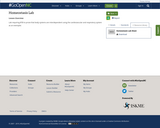
Lab requiring BTB to prove that body systems are interdependent using the cardiovascular and respiratory system as an exemplar.

This brief video lesson discusses breathing, the respiratory system, and how respiration is both affected by and affects the human body. Discussion/assessment questions and suggested supplemental resources are also included.
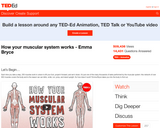
This brief video lesson discusses the muscular system and how it works. Discussion/assessment questions and suggested supplemental resources are also included.

This video resource was developed by Neuroscience students of Wake Forest University. This video is designed for middle school students and describes how the brain's motor cortex works with other organs to control movement in the body.